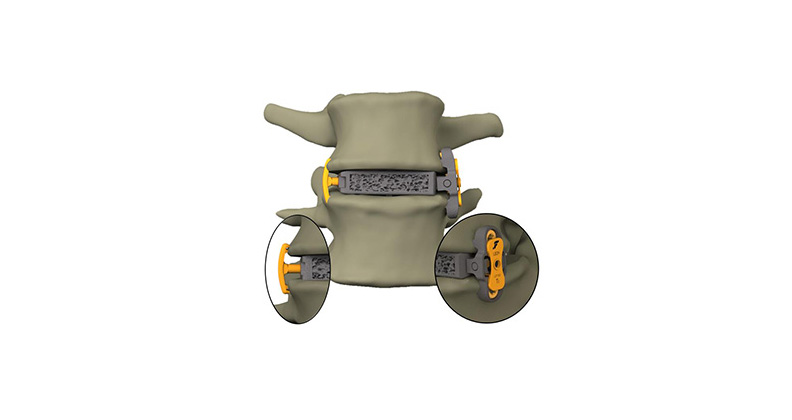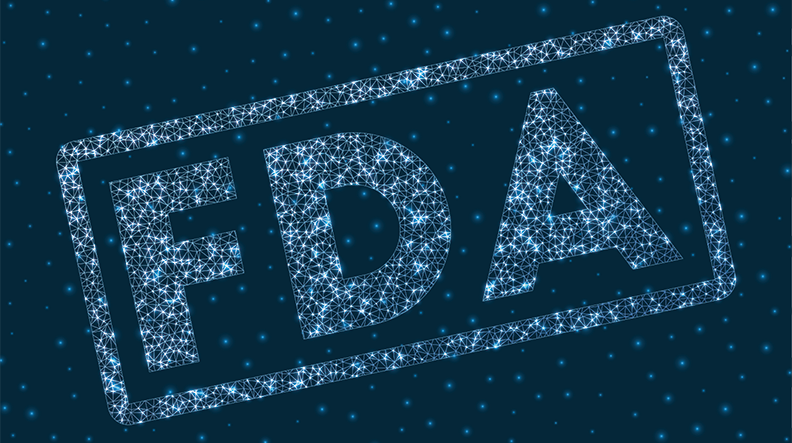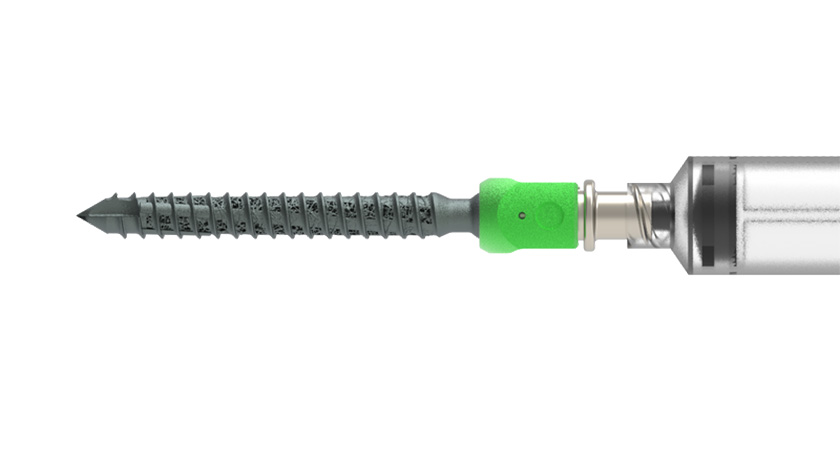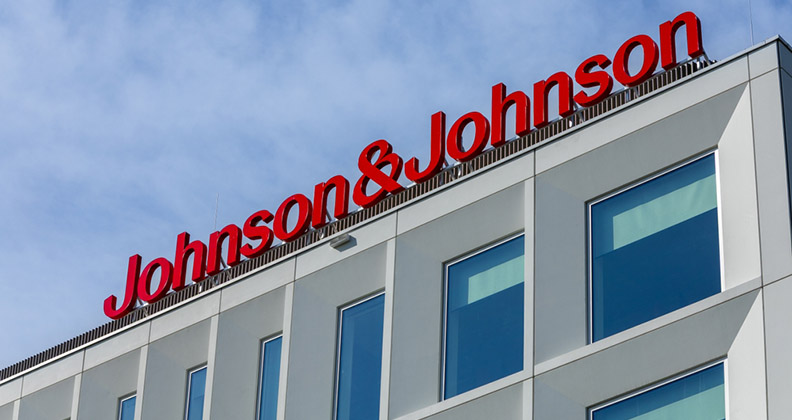
Lumbar fusion surgery provides short-term relief from debilitating leg pain, but often comes with a long-term cost. Patients who undergo fusion at one or two levels may return years later with adjacent segment disease, eventually requiring multiple additional fusions.
“They may start with one or two levels but end up with most of their spine fused 10 or 15 years later,” said Randal Betz, M.D., Founder and CEO of Foundation Surgical. “It works to relieve pain, but the loss of function and limitations that come with multilevel lumbar fusion aren’t talked about enough.”
That reality has sparked renewed momentum and grown demand for motion-preserving alternatives in spinal care. While cervical disc replacement is now well-established and widely adopted, lumbar motion preservation is still gaining momentum.
Foundation Surgical is part of the movement. The company’s Vertiwedge Intraosseous Device, a first-of-its-kind motion-preserving implant, received FDA clearance in late 2023 and is poised to begin clinical use this summer. It’s implanted during the company’s innovative Vertebral Body Osteotomy (VBO) procedure, which is performed through a lateral or oblique lateral approach and facilitates indirect decompression of the nerve roots while preserving the natural motion of the disc and facet joints.
As the first 3D-printed, FDA-cleared Class II device specifically designed for motion preservation, Vertiwedge represents a major milestone in adopting additive manufacturing technologies to advance spinal implants and earned Foundation Surgical the 2025 OMTEC Award for Groundbreaking Device Design.
Decades in the Making
Dr. Betz first conceived the idea of developing a motion-preserving spinal implant over 25 years ago. “I was treating children with paralytic curves and spina bifida,” he explained. “The standard of care involved placing rods in the spine from thoracic 2 to the pelvis, which left them unable to twist or bend.”
Working with a device company at the time, Dr. Betz developed a custom implant to correct the patients’ conditions while preserving motion in the spine. He received a series of patents and treated 14 patients under an IRB-approved protocol. The results were promising, and Dr. Betz published two papers showing significant improvement in spinal correction and function.
But FDA tightened rules around custom devices, halting further cases. The concept remained dormant until 2016, when an engineer who had seen Dr. Betz’s original presentations about his custom concept pitched a way to turn it into a standalone device that didn’t require the implantation of rods to stabilize it.
Dr. Betz and the engineer worked together to develop Vertiwedge’s early design concept. “By 2020, we had the patents in place, and I pitched the idea to about 30 companies,” Dr. Betz said. “None of them were interested. They all told me, ‘Come back when you get FDA approval and, by the way, you’re never going to get it.’ ”
The series of rejections inspired Dr. Betz to form Foundation Surgical in 2021. The newly formed company raised $10 million. In November 2024, the company received FDA clearance for Vertiwedge, which will be used in clinical cases this summer.
Reimaged Mechanics
Vertiwedge treats lumbar foraminal stenosis, a condition in which a collapsed disc space compresses the nerve root, causing persistent leg pain. The traditional solution involves interbody fusion. Surgeons remove the collapsed disc and insert a spacer, which lifts the foramen and decompresses the nerve root.
“Our approach is different,” Dr. Betz explained. “Instead of invading the disc space, we perform an osteotomy of the vertebral body and insert a spacer within the bone. It opens the foramen and preserves motion.”
Vertiwedge is used during Foundation’s VBO procedure, an indirect decompression of the nerve root. “In traditional procedures, the disc space is invaded, but with our approach, surgeons cut into the vertebral body itself,” Dr. Betz said. “We then place the spacer inside the bone, which opens the foramen while allowing the disc and facet joints in the back to continue moving.
“In cases of degenerative scoliosis, where multiple levels are involved, this approach helps correct the deformity and relieve leg pain.”
The technique represents a philosophical shift: Treating symptoms and pathology without sacrificing mobility. Vertiwedge’s design and the way it’s used during surgery set the device apart, according to Asher Breverman, Director of Product & Marketing at Foundation Surgical.
He explained that the staple fixation mechanism allows surgeons to fixate the spine on the far side from a single incision. Foundation also used 3D printing to create a dynamic and unique spinal implant.
The device’s 3D-printed spacer and plate are printed together but move relative to each other. Its cancellous lattice structure is uniquely engineered to mimic the natural topology of cancellous bone, unlike conventional 3D-printed implants that rely on repetitive geometric patterns. This device was designed with the intention of superior biomechanical compatibility, enhanced osseointegration and optimal load distribution.
Class II Clearance
One of the most important aspects of Vertiwedge’s development involves its regulatory approval. “Motion-preserving devices in spine are almost always Class III, which requires years of clinical trials and around $50 million in development costs,” Breverman said. “By working closely with FDA we achieved Class II clearance, which drastically accelerated our path to market.”
This classification also allows the company to iterate and evolve the product more quickly. “From a business standpoint, it sets the stage for an efficient commercial strategy,” Breverman said. “And it opens the door for future Class II devices for use in the cervical spine and other areas.”
To date, 27 surgeons have been trained on Vertiwedge in cadaver labs, and the feedback has been overwhelmingly positive. “At first, they’re skeptical because it’s a totally new concept,” Dr. Betz said. “But by the end of the lab, they’re holding the torch.”
As Foundation Surgical looks ahead to its alpha launch, it has clear priorities.
“One of our main goals for this year is to complete our initial series of cases,” Breverman said. “We’re aiming to collect data from the first 100 patients to demonstrate that this procedure isn’t just a viable alternative to spinal fusion. We want to show that it’s reproducible in multiple surgeons’ hands and can deliver results comparable to competitive XLIF or lumbar disc replacement.”
Breverman said Foundation is also aiming even higher. “We want to show that patients are achieving even better outcomes by maintaining range of motion while still addressing their symptoms,” he said. “Clinically, that’s one of our biggest goals.”
Over the past year, Foundation’s focus has been turning a 510(k)-cleared product into a functioning startup. Now, the focus shifts to building a full-scale, commercially viable company that can compete with the major spine players on a national level.
The company likes its chances with a breakthrough procedure that can help reduce the long-term complications often associated with fusion while enhancing patient quality of life by offering a functional, motion-preserving solution.
DC
Dan Cook is a Senior Editor at ORTHOWORLD. He develops content focused on important industry trends, top thought leaders and innovative technologies.




